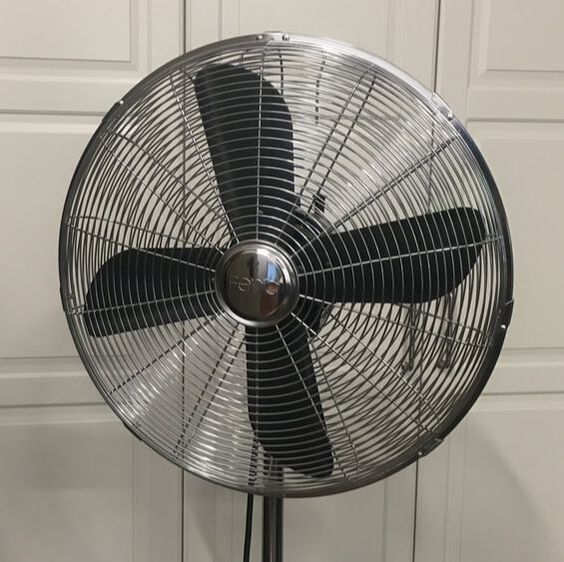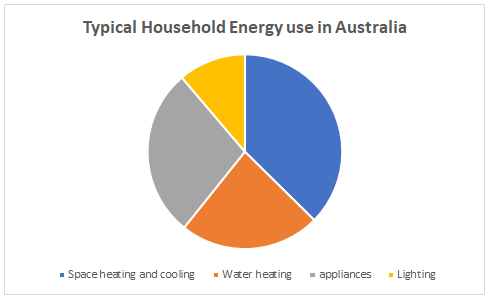Author: CLIVE BLANCHARDClive is an expert on achieving home energy efficiency at low cost so you can save money in comfort. Archives
July 2024
Categories |
Back to Blog
Where is my home's energy going?1/7/2024 Before you can improve your home’s comfort or reduce energy costs you need to know where the energy is going. The problem is that every home is different, and energy flows depend on location, house design and other factors. So, if you live in South Australia, say on the Adelaide plains, then the answer is different from if you live in Melbourne or Sydney. It will even be different if you live in in the Adelaide Hills. This is why it is important to think critically about where the advice you are looking at is coming from. Poor Sources of AdviceOne of the worst sources of advice is from home improvement shows. They can be fun to watch, but take everything with a grain of salt. Often the products spoken about are from sponsors and might claim product ‘A’ can save you up to say 76% of energy loss, without saying what location, what type of house and what type of heating and cooling they are using. Also be aware of you tube videos, it can be difficult to find the source of the video and often the information is wrong for your location (particularly if from overseas). This particularly applies to advice on how to keep cool from the colder parts of America or Europe. What works if the maximum temperature is 26 degrees is not going to work if the temperature is 40 degrees or hotter. Where is my house losing heat?If you are trying to improve comfort, the chart below shows the minimum, average and maximum percentages that the different cause of heat loss can have for a range of existing homes in and around Adelaide. Note that these figures differ from the Your Home data as they are for the Adelaide area, and not for Australia as a whole. This shows for example that if your windows are only 15% of heat losses but your floor is 30% of heat losses, you should concentrate on the floor first, although for most people the windows are a better place to start. What is costing me money for energy?Similarly, if your goal is to reduce energy costs, then the following chart shows the range of energy use cost estimates from recent Residential Efficiency Scorecard assessments before improvements (again in the Adelaide area). This shows that in most homes heating and cooling dominate. Heating energy cost is usually more than cooling energy cost. However, hot water can be expensive, depending on your usage and type of water heater. Lighting is usually minimal unless you have lots of halogen down lights. I have ignored pools and spas to avoid distorting the results, but if you have one it could easily be 35% of your energy costs. Note that Scorecard ignores cooking and other appliances, because in general their energy use is low. Newer appliances tend to have much lower energy consumption than old appliances, due to minimum performance ratings and/or star ratings helping you choose efficient appliances. An admittedly extreme example is when our 20-year-old TV died, the same size replacement TV only uses 10% of the electricity that the old one did. RecommendationsEven though this data is from one location, there is still a huge variability. If you intend investing a significant amount of time or money over the next few years, you want the best bang for the buck, so you don’t waste money and time on something with no noticeable effect. To do this:
0 Comments
Read More
Back to Blog
How Cold does your home feel in winter?25/4/2024 What problems do you have in winter?Do you feel any of the following in your home?
What to do firstTo get the most bang for your buck, you need to know where you are losing heat, and how effective different solutions will be.
The best way to do this is to get an independent energy audit from an experienced assessor. As well as keeping money in your pocket, not the electricity retailer's pocket, a good auditor can save you money by telling you what products will waste your money. Typically, that pays for the audit many times over.
Back to Blog
As your air conditioner is often your largest energy user, it is worth getting the best out of it. In fact, if you have a modern high performance reverse cycle (heat pump) air conditioner you should probably use it for heating as well as it is likely to cost less than a gas heater. If this is the case, it will almost certainly be your largest single energy user. Often, if an air conditioner is not performing as well as expected, it is not the air conditioner. the problem could be:
Setting the ThermostatSetting the thermostat correctly is critical to achieving comfort and minimising energy use. Setting the Temperature one-degree cooler than needed in the summer will cause a surprisingly large increase in energy use. Similarly setting the Temperature one-degree warmer than needed in the winter will also cause a surprisingly large increase in energy use. Some old-style thermostats have a single temperature setting, and the temperature swings around that setting. Most modern ones have separate heating and cooling settings, which allow closer control. Normally it is best to set the temperature at 22 degrees for a single setting thermostat or at 20º for heating and 24º for cooling (possibly higher if you have ceiling fans) with a dual setting thermostat. For most air conditioners this would give a temperature of around 24 degrees for most of the summer and 20 degrees for most of the winter. If you can achieve comfort at a higher temperature in summer, or a lower temperature in winter, use the higher summer setting or lower winter setting as every degree change can save up to 10% of your heating or cooling energy. In practice there are several factors that may require a different setting. For example, if in winter you get freezing air next to the windows sinking down and pooling at floor level, it may be necessary to set the thermostat at a higher temperature (although a better long-term solution would be to have honeycomb blinds or thick drapes with a pelmet to reduce the heat loss). To find out what the best solution is, it may be worth getting an energy audit as getting the right solution would save a lot more than the cost of the audit. Often thermostats are not very accurate; this is not really a problem if you can find a single setting that achieves comfort all year round. However, it is probably necessary to occasionally tweak the setting. You can find a suitable setting by randomly adjusting the thermostat, but if that doesn't seem to work, try the following approach: 1.On a day that is warm (to find the best summer setting) or cool (to find the best winter setting), but not an extremely hot or cold day. 2.Ensure the air conditioner has been running for at least one hour so the temperature is stable. 3.Initially set the thermostat to 22 degrees (for a single setting thermostat) or 24 degrees if you are setting cooling on a dual setting thermostat, or 20 degrees if setting heating on a dual setting thermostat. 4.Wait for a period of time (at least 10-15 minutes) to allow the air conditioner to stabilise again 5.If this hasn’t achieved comfort, set the thermostat slightly higher or lower, as seems appropriate. Don’t adjust it by more than a degree at a time or you will end up overcorrecting and take longer to find the best setting. In summer, using ceiling fans may enable you to set the thermostat slightly higher. It will also significantly reduce the number of hours you need to operate the air conditioner. Remember there are some problems that can’t be fixed by adjusting the thermostat. For example, if the air conditioner doesn’t have enough capacity due to the temperature of the day, adjusting the set point won’t make any difference to the room temperature. If this is the case, start with Cleaning Filters below, also see the blog post Our house is too hot, what can I do? Setting the thermostat also can't generally cure hot and cold spots, (refer Hot and Cold Spots below). A future post will address basic troubleshooting of an air conditioner. Maintenance requirementsAll air conditioning systems require some routine maintenance. Cleaning filters is vital (refer Below). The outdoor unit also needs to be kept clear from leaves and other debris. Cleaning FiltersJohn bought an older home with ducted air conditioning. The second year they lived there, the air conditioner didn’t appear to be cooling as well. John asked me to look at it. The filter was completely blocked. After cleaning, the cooler worked fine! It had never occurred to John that he needed to do anything for the air conditioner and so the filter hadn’t been cleaned since the previous occupants left! Filters require frequent cleaning because when they accumulate dirt, they block up, reducing airflow and hence the cooling capacity of the air conditioner. In residential air conditioners, filters are generally in hinged or sliding filter frames attached to the return air grille. These filters are generally of the washable type and should be cleaned by gently washing with water. However, check the manufacturer’s instructions first. If they won’t clean, use a mild detergent. As an alternative they can be vacuumed, however the cleaning frequency may need to be increased as vacuuming is not as effective. Most residential filters require frequent cleaning, generally at least monthly, and sometimes more frequently. When the filter gets torn or damaged it will need replacement Hot and Cold SpotsSome homes have hot and cold spots, usually caused by an air conditioner serving areas that have windows facing different directions, or the difference between the old and new parts of a home. It is possible to get ducted air conditioning controllers to give individual temperature control in each room, however this is still quite expensive. Most people must use judicious control of curtains or blinds to control temperature differences. To save randomly trying different ideas, it may be worth getting an energy audit as getting the right solution first off, would likely save a lot more than the cost of the audit. Adjusting the louvresThe aim in summer is to spread the cold air as widely and evenly as possible within the room. With the normal type of ceiling grille, the four or six segments can be rotated to direct air where required. If the louvres in the grille can be adjusted, direct the air along the ceiling. Try also to direct the air into the corners of the room. If using the air conditioner for heating, it may be necessary to adjust some (or all) of the vents downwards in winter. If you have a wall split, try their automatic setting first for the louvre blades, but if it doesn't give the desired comfort, experiment with the manual settings GeneralTo keep informed of my latest posts, sign up for the Energy Saving Newsletter and as a free bonus, get a 14 page extract from the forthcoming second edition of the book:
'House Taming, How to reduce greenhouse gases in comfort' Sign up now to the Energy Saving Newsletter. If you need personalised advice or you are thinking of spending some real money on air conditioning or improvements to the house, get an energy audit. I guarantee I can cost effectively save you the cost of the audit or the audit is free. Feel free to leave a comment or question below.
Back to Blog
Our house is too hot, what can I do?18/2/2024  In my last post (Wondering why you have trouble sleeping lately?) I promised I would write about creating a heat refuge (sometimes called a cool refuge) in your home for those exceptional hot nights where it doesn’t cool down enough to sleep. Given that more hot weather is forecast, I thought I would finish it early to give you a chance to at least take the first steps. With summer nighttime minimum temperatures increasing even faster than daytime temperatures creating a home heat refuge is desirable in much of Australia, especially during extreme weather conditions. The recent power blackouts in Victoria show that even if you have ducted air conditioning, when the grid goes down, unless your house is well insulated, the inside temperature can rise quickly to dangerous temperatures. Ideally you would upgrade your whole house, using a Residential Efficiency Scorecard or an EnerPHit Passive House assessment for guidance. As an alternative, when doing a Scorecard or EnerPHit assessment I can at no extra cost help you identify a room to serve as a home heat refuge, which in cold weather can double as a cold refuge as many improvements will target both. This is a lot cheaper than upgrading your whole house. Even if you can’t afford that, the following low-cost ideas could get you started to create a refuge in one room to make your life safer and more comfortable during heatwaves: Most of them will also double for protecting you from cold snaps in winter. These ideas should be read in conjunction with Wondering why you have trouble sleeping lately? Choosing the room to be your heat refuge:This should ideally be a room that:
Insulation and Sealing:
Window Shading and Curtains
Cooling Systems:
General:
Remember that creating a heat refuge is not only about physical comfort but also about protecting your health. If your home lacks proper cooling, consider finding local facilities (such as shopping centres, libraries or swimming pools) that can serve as cooling refuges during extreme heatwaves. Stay safe and take care! To keep informed of my latest posts, sign up for the Energy Saving Newsletter and as a free bonus, get a 14 page extract from the forthcoming second edition of the book: 'House Taming, How to reduce greenhouse gases in comfort' Sign up now to the Energy Saving Newsletter. If you need personalised advice or you are thinking on spending some real money on the refuge, get an energy audit. I guarantee I can cost effectively save you the cost of the audit. Feel free to leave a comment or question below.
Back to Blog
It might not just be you. In Adelaide the Bureau of Meteorology forecast overnight minima for March to May is for a 76% chance that it is above the historical median and 38% chance of it being unusually warm. Sarah Perkins-Kirkpatrick from the University of NSW says that since the mid 50”s overnight minima have been rising faster than daytime maxima. What this means is that in most of southern Australia and in particular the Adelaide plains, the number of nights that the temperature outside doesn’t drop to sleep temperatures has increased and is likely to continue to increase. This also means your house doesn’t cool down overnight and if the next day is also hot, the house continues to get even hotter. So, what should you do if it is a stinking hot night? If you have an air conditioner, make sure it is performing as well as possible, see Help, my air conditioner isn't performing! Tips for sleeping:
To keep informed of my latest posts, sign up for the Energy Saving Newsletter and as a free bonus, get a 14 page extract from the forthcoming second edition of the book: 'House Taming, How to reduce greenhouse gases in comfort' Sign up now to the Energy Saving Newsletter. If you need personalised advice or you are thinking on spending some real money on the refuge, get an energy audit. I guarantee I can cost effectively save you the cost of the audit. Feel free to leave a comment or question below.
Back to Blog
Help, my energy bill is ridiculous!1/9/2023 25% or more energy bill increasesHave you just received your latest energy bill and been shocked? Bills have typically gone up 20-25%, but many who were on good deals have found their discounts cut heavily and for these people the increase is often even more (up to 40%)! Well, what can you do about it? Plenty of Information but is it relevant for me?If you google for example ‘reduce energy bills’ you will get pages and pages of energy saving ideas, but are they relevant to you? Some will be relevant, but most won’t be (or will have a miniscule impact). There is no silver bullet, and whatever you do it is going to have to be a combination of savings in different areas. But as an example, our total energy cost for this year was less than $135. Yes, that’s right, $135 for the year! Now that took many years and there are reasons I could cost effectively reduce my energy use that low. However I can make a dramatic difference to your energy costs. see Energy Audits. Whether an idea will work for you depends on:
But how do these affect your energy costs? Do you understand where your energy is going?The first thing is to understand what is using your electricity and gas. The chart shows typical household energy use; however, you aren’t the average person and your use could vary dramatically (up or down) from the pie chart. Hence you really need tailored advice. Anything requiring heating or cooling for an extended period is likely to contribute significantly to your energy costs. For example, room heating and cooling are usually the biggest single energy users for most people. On average, 40% of home energy use but it could range from less than 20% to over 70%. Especially if you have whole of house heating or cooling this should be a big focus for your energy saving efforts. surprisingly, for most Southern Australians, Heating is a bigger energy demand than cooling. See also More on keeping warm Another big item is hot water, typically 25% of energy use. Appliances are typically around 30% of energy use. However, if you have a spa or swimming pool it could be much larger. If you have LED lights, lighting energy use is quite small. (If you don’t, it is worth only buying LED replacement globes where feasible.) If you have halogen downlights, that is a complicated problem, which will need to be the subject of a future post. What works for most homesBecause heating and cooling energy use is so large, keeping the heat in in winter and out in summer are likely to give worthwhile savings. See: More on keeping warm Winter comfort Stop air leaks in your home Get insulation right Another action worth doing is checking you are on the best tariff. Beware of comparison sites that are set up to make money, it is better to use a government site like Energy Made Easy or in Victoria https://compare.energy.vic.gov.au What only works sometimes Hence you really need tailored advice.Advice like ‘have your hot water system on a timer so it only heats at certain times’ could save on hot water heating costs, but this depends:
What should I do?Well, you can work through all the hundreds of ideas out there by yourself or you can get an audit done by an experienced auditor who will sort through the options and give you a manageable number of options that will work. See Energy Audits.
Back to Blog
More on keeping warm16/5/2023 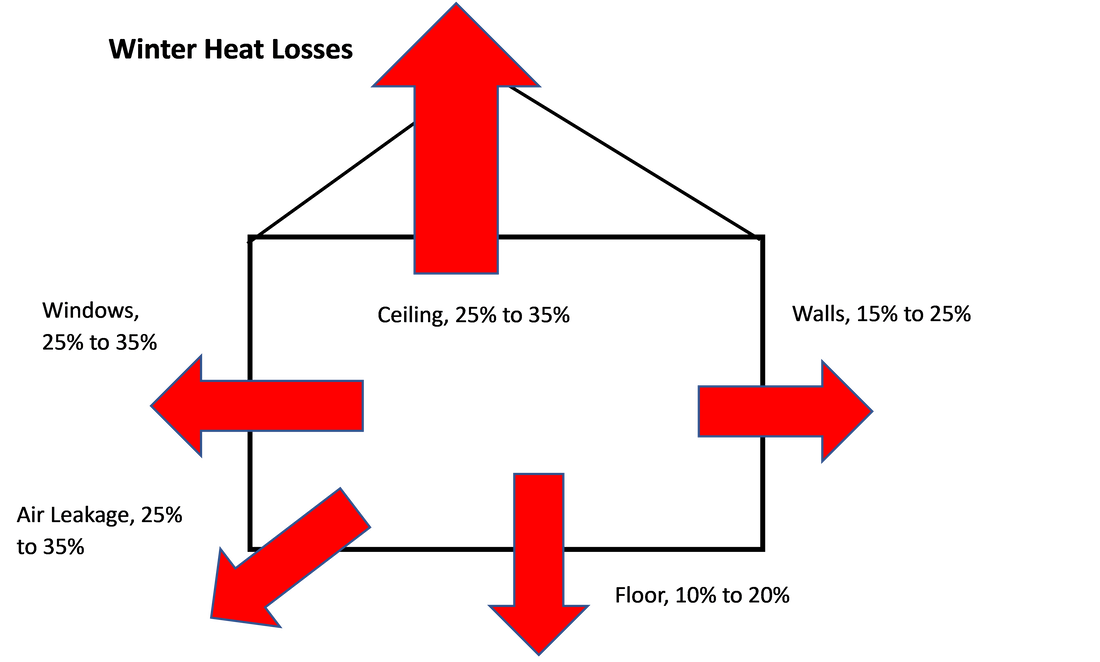 Keeping warm is usually the largest energy user (and cost), especially in Southern Australia. Accordingly, it is a good place to start for saving money, improving comfort and reducing greenhouse gas emissions. If you were outside and you wanted to keep warm on a cold day, you would wrap yourself up in warm clothes, stand out of the wind and try and catch the sun if there is any. As a last resort you would light a fire. Fundamentally, this is what you do to a house to keep warm. For a house the warm clothes are the insulation (ceiling insulation, curtains etc), standing out of the wind is weatherstripping the home so cold drafts don’t come in, catching the sun is having north facing windows to get warmth from the winter sun and lighting a fire is having some form of heater. As in my analogy, lighting the fire is the last resort because that produces greenhouse gases and is an ongoing expense. Let’s look at these elements. The first is insulation. If you have an older existing home, it is unlikely that your home is well insulated. The order of importance of insulation is generally:
Your options may be limited by renting or financial constraints. However, look at your insulation needs in the above order. For your clothing in winter, ensure you have long sleeves and either long pants or tights to keep your legs warm. More on this in Winter Comfort If the insulation in the ceiling doesn’t at least come up to the ceiling joists, I recommend that you add more. In cathedral ceilings or flat rooves, consider blown in insulation if lifting the roof to get batts in is too hard. More on ceiling insulation including faults that may be reducing the performance of the insulation you have, can be found in Get Insulation Right Window insulation options are extensive, and should be considered with both summer and winter in mind and depend a lot on the direction the window faces. Basically, in winter you want to keep the heat in, but let sunlight in when it is available, but in summer you want to keep heat out, in particular direct sunlight and at night allow built up heat to escape. Window options can include blinds, curtains, add on glazing and even replacing windows with double glazing if the frames are deteriorated. More on this in Winter Comfort Insulating walls is generally something that can only be done by a professional unless you are replacing either the external cladding or the internal lining. This means it can be expensive and it may be worth getting a professional energy efficiency report before committing any money to verify if that is the most cost-effective approach. Floor insulation also tends to be expensive and whether it is worthwhile depends on the performance of the rest of the house, so again I recommend a professional energy efficiency report if you are contemplating it. For information on weatherstripping, refer stop-air-leaks-in-your-home
Back to Blog
Top twelve free ways to save energy5/5/2023
Back to Blog
Winter Comfort2/5/2023 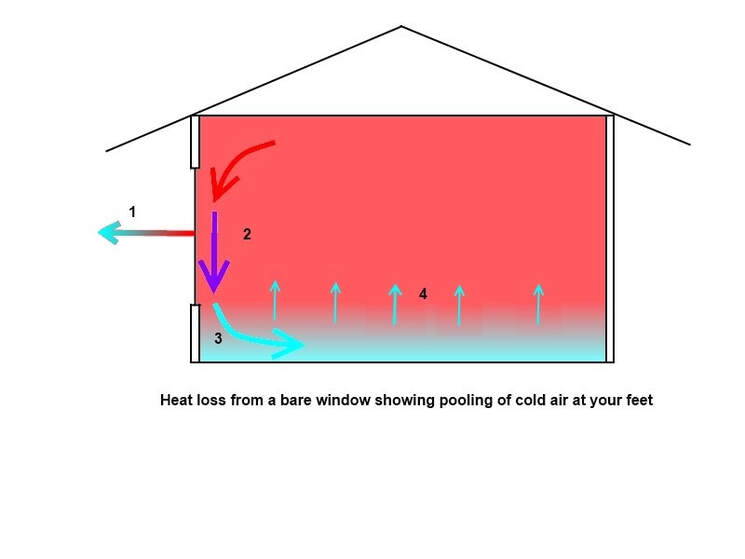 Winter comfort is influenced by a variety of factors beyond just temperature. While obvious factors like temperature affect comfort, there are also subtler ones that play a role. For instance, many Australian homes suffer from the "hot head/cold feet" syndrome, which can be exacerbated by several factors. One of the primary culprits is poor insulation in the walls and windows of homes. As cold air sinks, it accumulates on the floor, resulting in a pool of cold air at feet level. This happens because the window loses heat to the outside air (1), causing the air next to the window to get cold and sink to the floor (2). This causes a pool of cold air to collect at your feet (3). If no heat is added and the air isn’t stirred up by a fan, the pool of cold air will gradually thicken (4). From this we can see that we can reduce this problem by reducing the heat loss through the window with curtains, double glazing, roller shutters or preferably a combination of these. Drafts caused by air leaks under doors can also contribute to this issue. Flued gas room heaters can worsen the problem by dragging cold air across the floor as they take air from the room. (An unflued room gas heater is an even bigger problem, because you need to ensure your home is sufficiently leaky so that carbon dioxide, carbon monoxide and other pollutants from the burning gas are kept to a safe level.) Additionally, radiation from cold windows can make one side of the body cold while the other remains hot. Despite the size of the heater used, these issues can still prevent individuals from achieving optimal comfort. There are some obvious actions you can take to reduce these issues, for example, install high performance curtains and/or change to double glazing, insulate your walls, install door and window seals etc. If you have an unflued room gas heater, changing it to a reverse cycle air conditioner is generally a priority. These actions should be supplemented with wearing the right clothes for the season. Wear comfortable but warm clothes. Generally, the thicker the clothes, the warmer they will be. Wearing lots of layers also helps because they stop direct transmission of the heat and allow you to change your clothing level, by say putting on a jumper in the evening. However, other than the door and window seals (which are unlikely to eliminate the problem by themselves) all these items are expensive. The most effective items may not be obvious. To make sure you are getting the best bang for your buck, it is worthwhile getting an energy assessment by an experienced energy assessor.
Back to Blog
Stop air leaks in your home25/3/2023 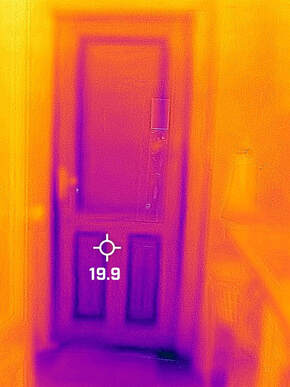 Thermal image of an external door showing the large (dark blue) air leak at the door bottom and a smaller leak at the side. The dark blue around the panels of the door are due to the fact that the panels were routed out and are very thin in those locations. Thermal image of an external door showing the large (dark blue) air leak at the door bottom and a smaller leak at the side. The dark blue around the panels of the door are due to the fact that the panels were routed out and are very thin in those locations. Stopping air leaks in your home can help you save money on heating and cooling bills and increase your home's energy efficiency. Here are some ways to stop air leaks in your home: 1. Identify the leaks: Check for air leaks around windows, doors, and vents. 2. Caulk: Use caulk (no more gaps or similar) to seal any gaps or cracks around windows, doors, and other areas where air may be leaking in or out. Make sure the sealant is appropriate for the location (e.g. exterior, interior, wet area as appropriate) 3. Weatherstripping: Install weatherstripping around doors and windows to prevent drafts. If using self-adhesive weatherstripping, choose one with a plastic backing (rather than paper) as they are much easier to apply. Raven weatherstripping has a plastic backing. The problem with self-adhesive weatherstripping is that if the gap in the door or window frame is too small the weatherstripping gets over compressed, and the door or window won't close properly. An alternative style is available from Ecomaster ecomasterstore.com.au/. They have a range of sealing options for different applications, which tend to work better than what is available at your local hardware store. If you can't afford weatherstripping, at least get yourself a door snake for each outside door and for the room you spend most time in of an evening. 4. Seal air ducts: Make sure air ducts are sealed and insulated to prevent air from escaping. Assuming you have an attic roof, check your airconditioning ducts and if necessary use duct tape to seal them. Any leaks from the ducts are particularly significant as the air in the duct is either hot or cold and under pressure so you can lose a lot of heat. Furthermore this reduces the amount of air entering the room compromising your comfort. If there are problems that you can't rectify yourself it will probably be worth paying to rectifying them. By following these tips, you can significantly reduce air leaks in your home, which can help lower your energy bills and make your home more comfortable. Stopping air leaks in your home can improve comfort in several ways:
If you are planning on doing more to reduce energy use, I suggest you consider creating a plan to ensure you achieve an optimum insulation level and consider what options you should do when. See Energy Audits. |
- Home
- Energy Audits
- Scorecard
- New homes
- Passive House
- FAQ Passive House/EnerPHit
- Low cost savings blog
- Save Newsletter
- Architect/builder services
- FAQ 7-Star
- NCC Newsletter
- NCC 2022 Blog
- Greenhouse gases
- Why us
- Contact
- NCC Signed up
- Save Signed up
- Solar
- Gift Cards
- Enquiry thanks
- Sell a home
- Needs Survey
- Home
- Energy Audits
- Scorecard
- New homes
- Passive House
- FAQ Passive House/EnerPHit
- Low cost savings blog
- Save Newsletter
- Architect/builder services
- FAQ 7-Star
- NCC Newsletter
- NCC 2022 Blog
- Greenhouse gases
- Why us
- Contact
- NCC Signed up
- Save Signed up
- Solar
- Gift Cards
- Enquiry thanks
- Sell a home
- Needs Survey
- Home
- Energy Audits
- Scorecard
- New homes
- Passive House
- FAQ Passive House/EnerPHit
- Low cost savings blog
- Save Newsletter
- Architect/builder services
- FAQ 7-Star
- NCC Newsletter
- NCC 2022 Blog
- Greenhouse gases
- Why us
- Contact
- NCC Signed up
- Save Signed up
- Solar
- Gift Cards
- Enquiry thanks
- Sell a home
- Needs Survey
|
About Your Low Energy Home
At Your Low energy home our mission is to help you reduce greenhouse gases and running costs of your home. This applies to: Our primary goal is to help people make the most cost-effective decisions to reduce greenhouse gas emissions. Our objective is to work with you to achieve your goals at the level of expenditure which is comfortable for you. This can be achieved while increasing comfort and amenity. |
|

 RSS Feed
RSS Feed


